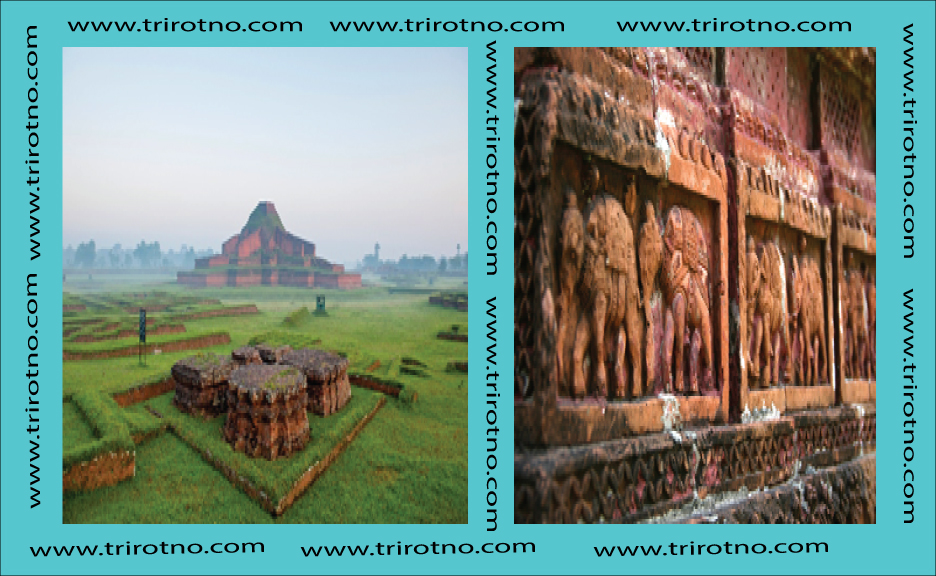Paharpur Buddhist Monastery
written by – Labanaya Barua
Paharpur Buddhist Monastery, also known as Somopura Mahavihara (সোমপুর মহাবিহার) was a renowned intellectual center until the 12 the century. It is very important archaeological site in Bangladesh which is situated in Badalgachi Upazila under the present Naogaon district, near Rajshahi, northwestern Bangladesh. Paharpur Buddha Monastery can be called the world’s largest Buddhist temple. It was declared as a World Heritage site in 1985.
This area was named Sompur during Pala period. During this pala period, Sri Dharmapaldev (770-810AD), the second king of the Palais (Varendri-Magadha), built this monastery in the late 8th or early nineteenth century. In 1879 Sir Cunningham developed this great work.
The Paharpur Buddhist Monastery were developed for Buddhist religion’s high excellence in this pala period. In addition to various places in the Indian subcontinent, Buddhists of China, Tibet, Myanmar (earlier Burma), Malaysia, Indonesia, etc. used to come here to acquire religious knowledge. According to the history, Acharya (great scholar) Atish Dipankar lived for some time in Paharpur Buddhist monastery. His teacher Ratnakar Shamitya was the Mahasthabi (chief Pandit) of the Bihar. Ancient Carpenter Kanyapa and-and his guru, Jalandharan-pa, or Hari-Pa used to live here. After the end of the power of the Palas, this monastery became a ruin due to historical and geographical reasons.
It is a large square rectangle which is approximately 922 feet (270 meters) in north and 919 feet in the west and is composed of monks’ cells; the structure holds more than 177 rooms around the main temple. Each of these rooms is 14 feet long and 13 feet in width. The main wall of Bihar was found to be 20 feet wide. There are many smaller temples available in the enclosure. The central sanctuary has a solid ground plan which ascents in 3 terraces above ground level to a peak of 70 feet. The above-ground walls and ceilings have long been disintegrated. The area that was found intact was 280 meters in length and 278 meters wide.
The wondrous main temple is the unique architecture of the building industry. Extraordinary artistic planning. There are about 2 thousand terracotta plaques available in the wall of the temple.
It was dispersed in the anticipated reflection of the general public life of East Bengal. For example – people, hunters, dancing women, shepherds, plants, flowers, animals, elephants, horses and much more. The dramatic composition of beautiful cultural history is seen in the eyes of the eyes. Buddhist terra-cotta artwork and sacred Hindu sculptures are found in its base walls.
Reference
- Temple, A. (2019). Paharpur Bihar, Sompur Bihar. Retrieved from https://worldheritagebd.blogspot.com/2015/05/paharpur-bihar.html
- Centre, U. (2019). UNESCO World Heritage Centre. Retrieved from https://whc.unesco.org/
- (2019). Retrieved from http://en.banglapedia.org/index.php?title=Main_Page
- World Heritage Journeys Buddha. (2019). Retrieved from https://visitworldheritage.com/en/buddha
- Buddhist archaeological sites in Bangladesh | daily sun. (2019). Retrieved from https://www.daily-sun.com/printversion/details/307344/2018/05/08/Buddhist-archaeological-sites-in-Bangladesh

